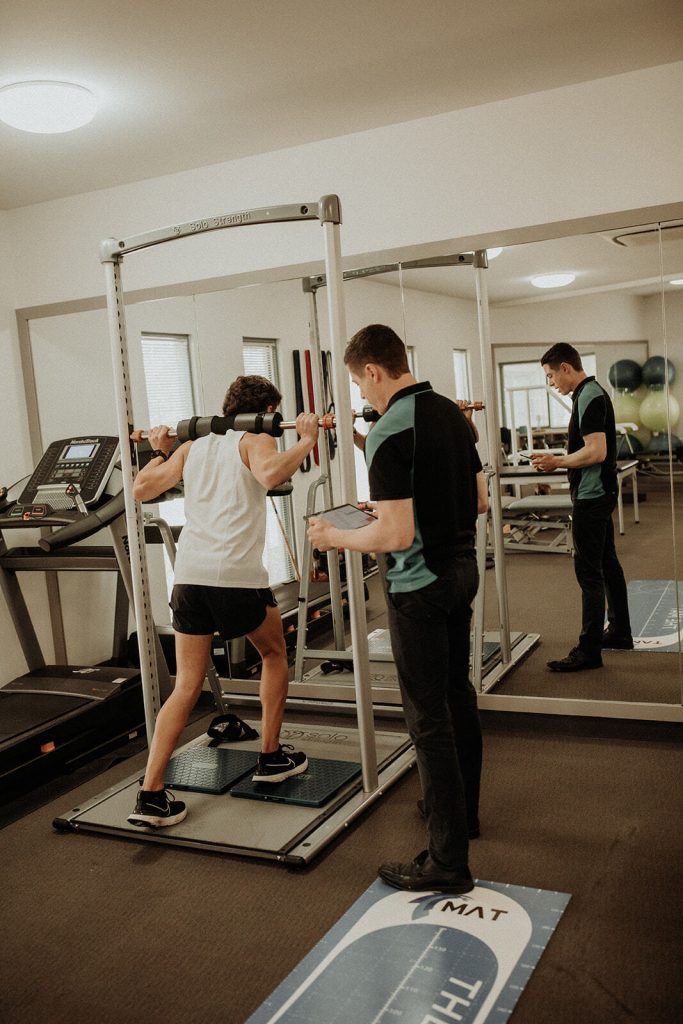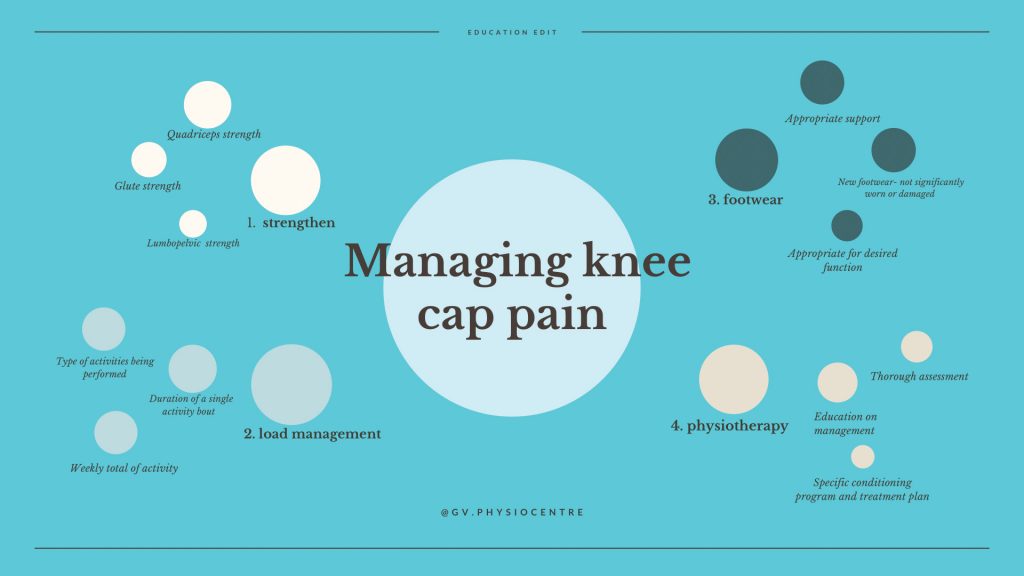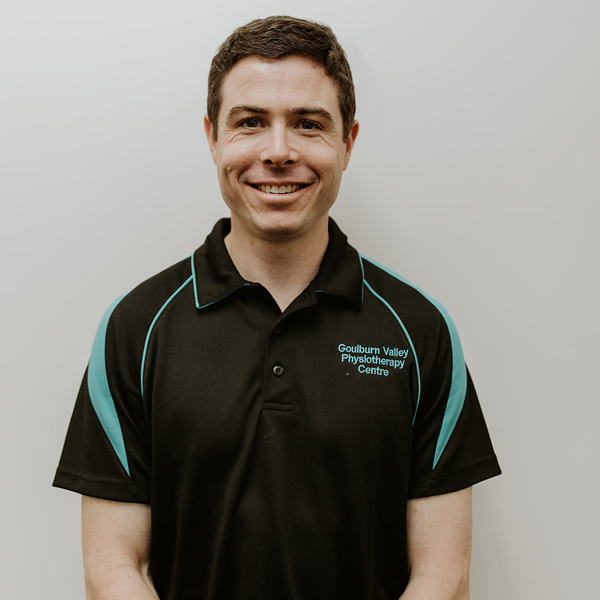Anybody who has experienced knee cap pain understands that it can be quite a problem. Tasks, that we usually take for granted, can become painful and difficult. Pain can make things such as running, squatting, stairs or even standing from the toilet painful. What’s more, pain is often very persistent. Something that we feel should have resolved with a bit of rest can persist for months or even years. Luckily there are things that we can do to help ourselves recover. Here are the top three.
Get strong
Strengthening helps knee cap pain. People can sometimes be apprehensive about putting load through a sore joint but done correctly it can be one of the most beneficial things you can do.
Progressive exercises that load the quadriceps, gluteal and trunk muscles can help reduce knee cap pain. Exercises should be commenced at a level that you are comfortable with, and progressed into functional positions and movements to help achieve your goals. While it may not help overnight, give it a bit of time and perseverance and results will come.
Manage load
A common factor that leads to injury is a rapid increase in load. It could be ramping up the kilometers quickly to get ready for a running event, spending hours in the garden in spring after a long cold winter, or dialling up the overall exercise as part of a New Year resolution. The trick is to ease into new activity gradually over time. Our bodies are great at adapting to the demands we place on it. Once knee cap pain has settled, grading back into exercise and harnessing our bodies ability to adapt is the key.

Wear good shoes
One of the most simple things you can do to help knee cap pain is to wear good shoes. Some people also benefit from the use of orthotics in their shoes, but professional guidance should be sought. If the shoes you exercise in are getting a bit worn out it could be time to hit the shops to get a new set of kicks. Make sure that shoes are fitted properly and suit your foot type and activity.
With proper management knee cap pain need not impede your life or ability to exercise. A good physiotherapist will be able to help guide you through your rehabilitation to achieve the best result. After a thorough assessment a plan should be developed that includes exercises specific to your needs and guidance regarding load management. A good physiotherapist should also work with podiatrists, coaches and personal trainers as required to achieve the best outcome for you.


Written by
Brenton Kiel
Brenton is a titled Musculoskeletal Physiotherapist having completed his masters degree in the treatment of muscle and joint conditions in addition to his undergraduate Physiotherapy training.

